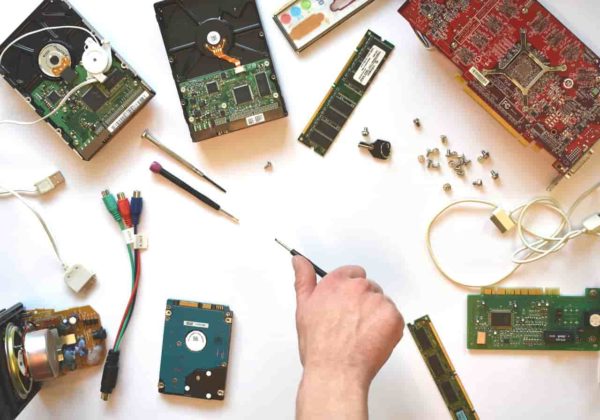Home computer repair does not require brain surgery. The majority of computer repairs can divide into software and hardware. Although a screwdriver may be dangerous in some hands, I have to admit it. However, if you can change the light bulb without breaking your arm, I bet you can swap out a computer component. While software can be a little more complicated, most computer users are able to handle it.
Over 30 years, I have been associated with computer repair in some way or another. These are the major repairs that I am called for every week.
Spyware/Malware issues
Hardware failure (power supplies and hard drives usually),
Computer boot problems (lost passwords, toasted OS, hardware failure, etc.)
These are all possible challenges depending on the data that is important, such as tax records or photos. There are many ways to fix any computer. It all depends on your time and budget. However, not all data can always be saved. Data recovery is difficult if the hard drive has suffered a catastrophic hardware failure.
It is a good idea to have a backup of all your data before you begin any computer repair. I don’t ever work on anything more than 30 minutes without backing it all up on another media. A USB thumb drive costs $30 for 5 gigs of storage, while CD and DVD prices are less than a dollar. My computer experience was a learning curve. It’s easier to fix any computer problems at home if you don’t have essential data. After reading this article, please make sure you back up all your important data and continue to do so on a regular basis.
The home computer repair can be done with a backup. It takes a bit of investigation (to identify the real issue, sometimes Windows will not direct you in the right direction) and a good solution. Let’s examine the most effective way to prevent the three most common computer repair issues and the possible solutions if you have one.
Spyware/Malware: There are two good ways to prevent Spyware and Malware from infecting your computer. One is to ensure that your Windows OS (normally Windows) has the latest security patches available from Microsoft. Automatic Updating is easy to enable in your Security Center. Click on Control Panel, then Security Center, and check that Automatic updates are on. You can also make sure that you have a reliable Anti-Virus program installed. This will ensure that it is automatically updated. These programs will provide you with a 93% solution.
Anti-Spyware software can address another 5%; this is free from Microsoft. Just search for Windows Defender on your preferred Search Engine. Spybot, which is a free program from Spybot.info, does a good job as well. There is no 100% solution for the remaining 2%. Safety can be maintained by common sense, such as being aware of where you surf and which emails you open.
But what if you have already been infected?
Although there are manual ways to get rid of Spyware/Malware programs, they can be difficult and time-consuming. A manual solution can be found if you search for the offender, which is usually a widespread problem. SpySweeper, a commercial program that is highly effective, is my favorite. It costs $30 per year, which could save you lots of time and hassle.
Hardware Failure: There are not many ways to prevent this from happening. Modern computer components have a 5-year average failure rate; this can change depending on how frequently you use your computer and where it is left. I have several test computers that are over 7 years old that I don’t use very often.
However, I would like to point out that almost all of the customers I contact for hardware issues had warning signs prior to the final crash—strange noises, computer freezing, frequent restarts, and so on. Alarming signs include strange noises, computer freezing up, frequent restarts, and other issues. Don’t wait for your computer to go out of control literally. If any of these occur, switch to proactive mode and replace the hard drive, power supply, or RAM. Which one? It isn’t easy. Some diagnostic programs are helpful, but I find that it is often experienced.
There are two possible explanations for freezing and rebooting: A flaky power supply or RAM going bad. The power supply gradually loses its ability to supply sufficient wattage. If your computer runs fine for 30 minutes, that could indicate that it is the power supply. Constant exposure to heating and cooling causes RAM to flake; It will also usually die slowly. Both are inexpensive to replace. However, the power supply comes with 8-10 plugs that you should be aware of when changing it. A power supply of 250 watts or more will suffice for most computers. A power supply of 300 watts or more is recommended. You can match the power supply and RAM to your computer or check the motherboard requirements for speed or wattage.
Hard drives can fail to boot with messages like “no operating systems” or similar. This is usually due to a controller or hard disk (some hard drives also have controllers that go south). If you attempt to save or duplicate files, an error message may be displayed. This could also indicate a problem with your hard drive. The issue is either your hard drive or power supply fan. It is possible to format a drive low-level and return it, but the cost of new hard drives is so low that it’s worth taking the chance.
Boot Up Problems: Windows of any flavor is number one. All versions have a ” registry ” to manage all settings for software, users, and hardware; all versions have a “registry”. It is simply a fancy list of settings that can be easily destroyed. If there is a software issue, the files that are open won’t shut down properly, and it can ruin the database integrity—rebooting causes the registry to become unreadable or even completely blank. Windows contains several files within the “hive” (five to be precise). While any one of these files can be toast by itself, I recommend replacing all five as they are dependent on each other.
If you have Recovery Console access, it is possible to access the Recovery Console and locate a valuable backup file set. Copy them to the current access point. It sounds easy, but the directory structure is quite complicated, and you need to unhide backup locations. Microsoft’s knowledge base contains information about the Recovery Console. You can also find out how to replace registry files at http://support.microsoft.com/search/#adv=1.
The Recovery Console can be run from Windows if installed. If not, it can be run from your installation CD. You might not have an installed CD, as many computer manufacturers no longer offer one. You can use a bootable DVD with an NTFS-enabled OS (like Linux), and copy the files described in the Recover Console information. You can borrow a friend’s Windows XP installation CD (Pro or Home) and use Recovery Console. Ok, you have no friends with Linux CDs and don’t want to.
Plan B:
Take your hard drive out from your computer.
– Switch the connector to slave (many hard drives have instructions written on the case).
– Connect it to a Windows computer.
Now you can access the drive with an NTFS Write enabled OS. For more information, refer to Recovery Console Fix.
If your hard drive doesn’t light up or spin, you can install a replacement. Many new units include a CD to help you add the drive. To install the original software, you can use the Recovery CDs that the manufacturer provided. Do you not have the restored discs? You can usually get a set of fixed disks for $20 from your computer manufacturer. For the best software, be sure to provide the exact model number. I always order a set if I do not have the correct model number for my new computer. So I’m prepared for anything.
These are the main points of computer repair at home for the three most frequent problems. It is not difficult for most people. Just take it slow and carefully read the instructions. When push comes to shove, reach out to a friend who might have more experience. You pay for the pizza; they offer some moral support and expertise.


3 replies on “Computer Repair at Home – How Can I Help?”
Excellent article. Very interesting to read. I really love to read such a nice article. Thanks! keep rocking flower gardening tips for beginners,
|…| 10 Best Free Blogging WebSites 2021 (Create a Blog for Free) |…|
|…| Computer Repair at Home – How Can I Help? |…|